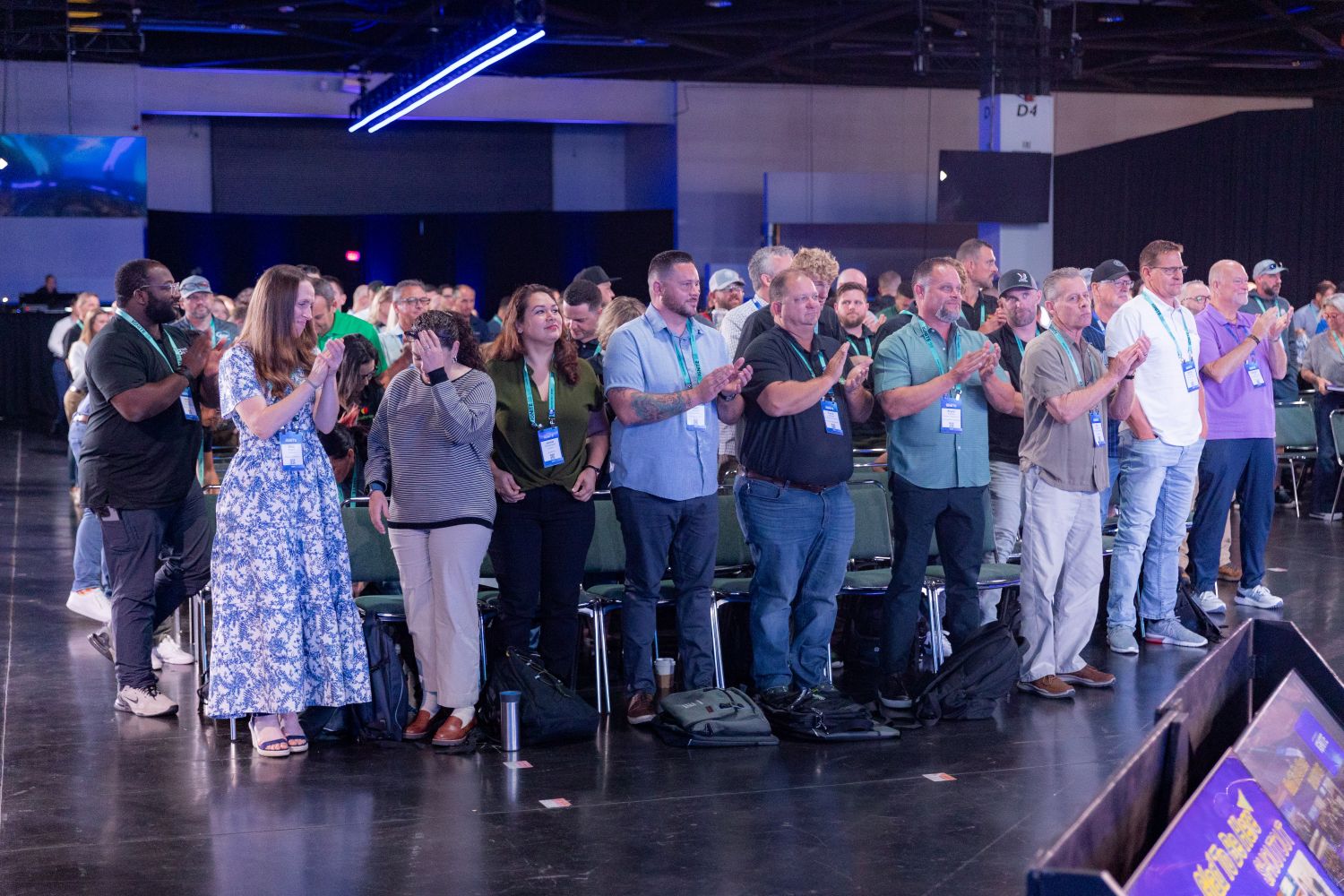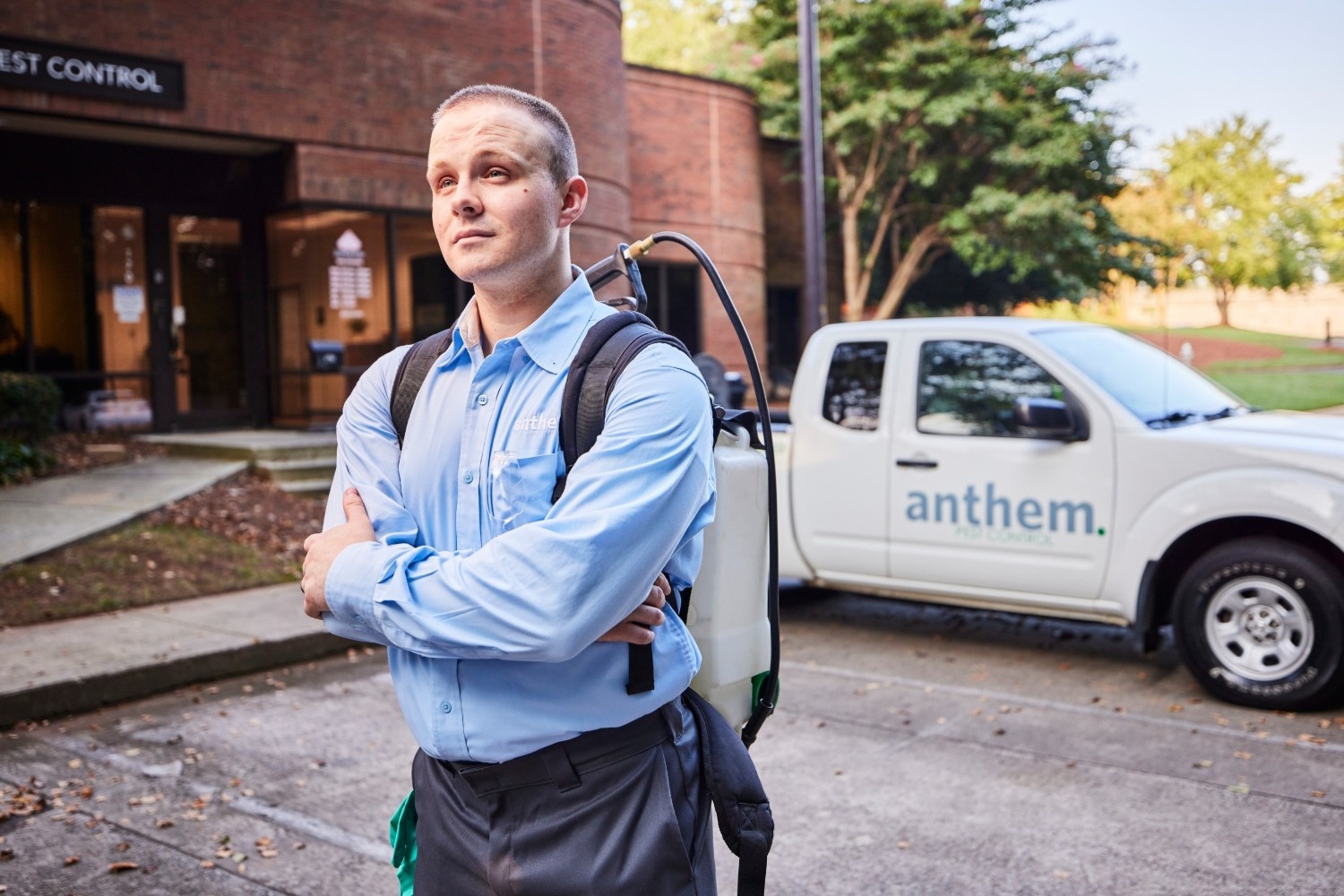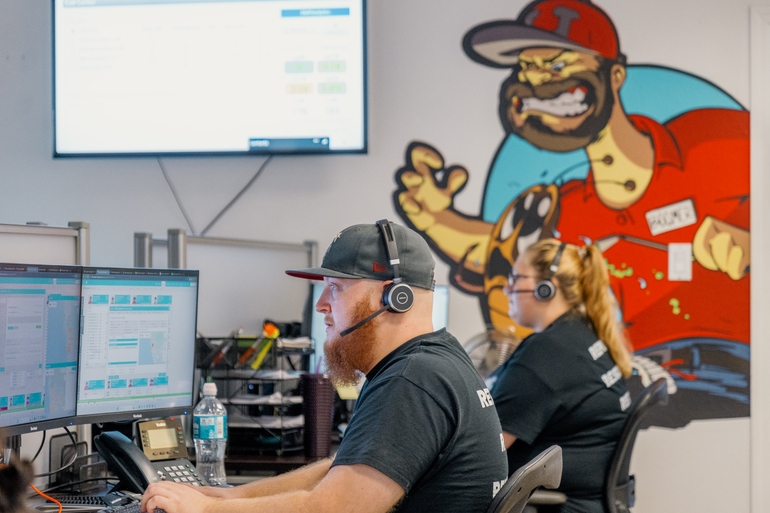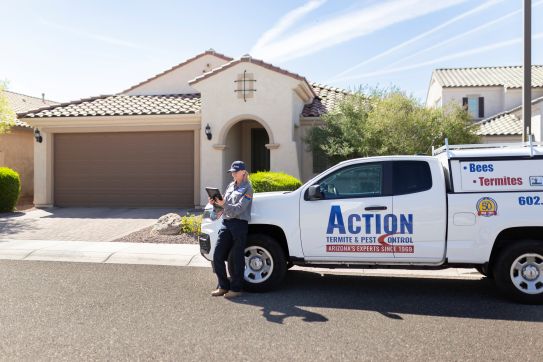Pest Control Facebook Ads Guide (+Setup & Cost Tips)
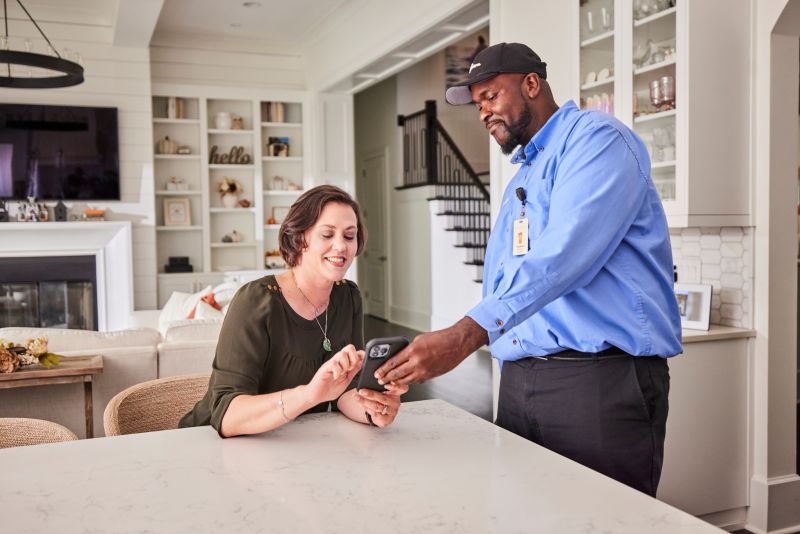
Roughly 68% of U.S. adults—around 177 million people—use Facebook, according to the latest data from Pew Research Center.
Despite flat growth in recent years, Facebook remains one of the most powerful social media platforms for reaching potential customers. The Facebook user base is estimated to reach 262.8 million users, marking a new peak in 2028.
For pest control companies, Facebook Ads provide highly targeted and cost-effective options for driving lead generation, increasing brand awareness, and converting homeowners into long-term clients.
In this guide, we’ll cover the benefits of Facebook advertising, how to set up effective pest control Facebook ads, budgeting tips, ad examples, common challenges, and how to optimize every campaign for stronger results.
What Are the Benefits of Facebook Ads for Pest Control?
Wondering if Facebook Ads is the right channel for your pest control company? Dive into some of the main benefits of marketing pest control services on Facebook.
Super-Accurate Audience Targeting
Unlike most traditional marketing methods, Facebook Ads enable accurate targeting, helping to avoid wasting valuable ad spend. Facebook Ads Manager starts with basic demographic filters, including:
Age
Gender
Location
Facebook Ads also enable pest control companies to reach homeowners who are dealing with common pests, ensuring your message is seen by those most likely to need your services.
Then, it lets you refine your audience further using advanced filters like:
Household income
Education level
Relationship status
Job title
Life events (e.g., new job, newlywed, recently moved)
You can also add behavior- or interest-based targeting. Additionally, custom targeting allows you to retarget website visitors or people who’ve interacted with your social media content.
Finally, you can upload your customer list and ask Facebook to build a lookalike audience—a group of users who share traits with your current clients, making it easier to reach more quality leads.
Relatively Low Cost (Compared to Other Ad Options)
Facebook allows complete control over your ad budget, with no minimum spend required. Costs vary by:
Seasonality
Industry
Competition
Targeting criteria
Campaign objectives
That flexibility makes Facebook one of the more accessible platforms for pest control marketing, allowing you to promote regular pest control treatments to prevent infestations.
Monitor and Improve Ad Performance with Ads Manager
Facebook Ads Manager enables you to track ad performance, cost per result, and audience behavior in real-time. It even provides automated suggestions to help you improve results.
For instance, if multiple ad sets target the same audience, Facebook may recommend disabling the weaker one to lower your cost per conversion and generate more pest control leads.
With precise audience targeting, flexible pricing, and real-time performance insights, Facebook Ads remain one of the most powerful digital marketing tools for pest control companies. Pest control Facebook ads help protect homes and families from pest-related risks by targeting those in need of practical solutions.
Next, let’s walk through how to set up a high-performing Facebook Ads campaign step by step.
Step-by-Step: How to Set Up Pest Control Facebook Ads
Ready to launch your Facebook Ads campaign? Follow these steps:
Define your campaign objective.
Set your target audience.
Choose your ad placements.
Set your budget and schedule.
Create your ad set.
Design your ad creative. Include a clear call-to-action button, such as 'Contact Me' or 'Book Now', to encourage users to take the next step.
Set up your lead form. Prompt users to enter their ZIP code or contact information to receive a quote or more information.
Review and launch your campaign.
1. Decide on the Goals of Your Campaign
Before you even open Ads Manager, consider what you want your campaign to accomplish. For example, are you trying to generate new leads, or would you like to send a seasonal offer to existing pest control customers? Do you want to raise awareness of your brand, or are you trying to send traffic to your website?
Your goals help determine the Ad Objective you choose.
2. Choose the Right Ad Objective
Facebook offers a variety of objectives from which to choose.
They include:
Awareness: Show your ads to people who are most likely to remember them. This objective expands your reach and creates brand awareness.
Traffic: Use the traffic objective when you want to direct users to a specific destination, such as your website.
Engagement: Increase your message views, video views, post engagement, Page likes, or event responses. If you have a video promoting your services, select the engagement objective to increase the number of people who watch it.
Leads: The lead generation ads offer a built-in form, allowing you to collect leads directly from your Facebook ad. Or, encourage users to message or call your brand. You can also link to a lead form page on your website. Remember, the fewer hoops you put your potential client through, the better their chance of converting.
App promotion: Find new users to download and continue using your app.
Sales: Find people likely to purchase your product or service. Use this objective for remarketing or bottom-of-the-funnel campaigns.
Ultimately, pest control companies find the most success with Leads and Sales objectives because they optimize ads to gain pest control leads or identify individuals ready to buy.
Regularly review your chosen objectives and ad performance to ensure they align with your business goals.
3. Define Your Target Audience
Using the Facebook targeting options, narrow in on your ideal customer. If you have a buyer persona, select targeting that matches. You can also target users who search for pest control services in their area, such as by ZIP code or location.
You can also build your audience based on your existing customers' characteristics. Are they married? Do they have a certain household income? Do they live in a specific ZIP code? Consider targeting ads specifically to homeowners or homes in your service area to reach those most likely to require pest control services.
Many service companies like to run new mover campaigns using the “Recently Moved” behavior targeting. Consider offering a discount that would appeal to new movers, such as a reduced membership fee.
Quick tip: Not sure how to target your ads? Use the Custom Audience function to upload a list of current customers, and direct Facebook to generate a lookalike audience.
Because Facebook allows you to adjust ads in real-time, you could create a couple of audiences, A/B test them, and then turn off the ads that generated fewer results.
4. Choose Where to Run the Ads
Next, select the placement of your Ads. Meta offers two options to start:
Advantage+ placements: Facebook’s delivery system will allocate your ad set’s budget across multiple placements based on where they’re likely to perform best.
Manual placements: You can manually choose which places to show your ad, including options that highlight services for the yard or outdoor spaces, such as mosquito control.
Facebook recommends using Advantage+, which is also the most time-efficient option. For manual placements, keep an eye on how your ads are performing by placement and optimize them in real-time.
Some of the manual placement options include:
Facebook feed
Instagram feed
Facebook Marketplace
Facebook video feeds
Facebook right column
Instagram explore
Facebook and Instagram Stories
Facebook and Instagram Reels
Note: Certain placements require separate creative options. For example, a reel requires a video. Stories need a vertical aspect ratio.
5. Determine Your Ad Budget
Decide how much money you want to spend on your Facebook Ads campaign. You can set a lifetime Facebook Ads budget with a start and end date, and Facebook optimizes the budget over the entirety of your campaign, or you can set a daily budget.
When planning your budget, be sure to monitor for any additional costs that may arise during the campaign, such as extra charges for extended reach or follow-up ads.
An auction determines Facebook Ads pricing, and you can also set a maximum bid amount if you prefer. Ultimately, Facebook’s machine learning optimizes spend to increase your desired outcome (based on the objective you chose).
6. Select the Right Ad Format
Choose a format for your ads, either single image, carousel, slideshow, or video ads. This might come down to your creative options. You can also A/B test formats to find out which one works best for your brand.
7. Launch and Tweak as You Go
Finally, it’s time to build your ad. Facebook walks you through the components, which include media, primary text, headline, description, and call to action. Once you finish the creative section, launch your ads.
Remember to monitor performance and make any necessary adjustments to ensure your ads are running effectively and delivering the desired results. This will help you optimize your campaign and maximize your budget.
Pest Control Company Facebook Ads Best Practices
Anytime you spend money on advertising, you want to ensure a maximum return on your marketing budget. Follow these digital advertising best practices.
To build trust with potential customers, clearly communicate your service guarantee, such as a satisfaction or money-back guarantee, to reassure them of your commitment to quality and reliability.
When crafting ad messaging, highlight how your company can address specific pest issues using targeted solutions tailored to different areas of a property.
Address customer pain points by focusing your ads on solving their pest problem quickly and effectively.
Ensure Your Website Is Spot On
Consider the user’s experience.
They see an ad for a spring special on pest control services, click it, and land on a page on your pest control website. You want that landing page to provide the user with all the necessary information, including your phone number and other contact details. Be sure to include details about property inspections or how your services help protect the property from pests, preventing further damage or infestation.
If they land on a confusing page that doesn’t outline the special, property protection, or how to contact your business, they’ll likely click away.
Also, ensure your website is responsive for mobile devices, as this is where a significant portion of your ad traffic originates.
Formulate the Right Messaging
Simply stating that your company offers pest control isn’t enough. Consider your consumers' pain points and create messaging that speaks to them. Are they wasting time and money buying and setting up DIY pest control solutions? Focus your ad copy on the benefits of saving time and money.
Additionally, consider ways to differentiate your business.
Highlight your knowledgeable pest experts in your ad messaging to reassure customers of your team's expertise and professionalism. Many consumers today are concerned about the products they use and their impact on their pets, family, and the environment.
Communicate if your products are green and pet-safe.
Advertise for the Entire Customer Journey
A buyer goes through three steps: awareness, consideration, and decision. An advertiser’s goal is to meet the customer at each step of the process.
Awareness: In this stage, a buyer is just becoming aware of a pest control problem. Your goal is to introduce your company and generate awareness for your solutions. Rather than trying to convert them, you want to offer educational content to customers at this stage, such as a blog post on common pest problems or a quick video with pest-proofing tips.
Consideration: During consideration, a consumer begins researching solutions to their problem and evaluating different service providers. Your ads should position your company as the reliable and trustworthy option. Advertising case studies and testimonials work well at this stage. Encourage potential customers to ask questions—your team should be ready and approachable, providing straightforward answers to any questions they may have about your services.
Decision: After evaluating the options, a consumer enters the final stage of the buying journey.
Provide incentives and a clear call to action to encourage consumers to choose your company’s services. Ideas include limited-time offers or special discounts.
By strategically targeting customers at each stage of the buyer’s journey, a pest control company raises awareness, builds trust, and drives conversions, ultimately attracting and retaining more customers.
Include Social Proof in Your Ads
Incorporate social proof in your ads to build trust with potential new customers. Social proof refers to demonstrating to potential customers that other people have utilized and appreciated your services.
Include testimonials, customer reviews, ratings, or case studies as forms of social proof. When a buyer sees high ratings or direct quotes from satisfied customers, it makes it easier for them to trust and choose your services.
Retarget Your Website Visitors
In the consideration stage of a buying journey, potential customers often visit the websites of several pest control companies they might hire. And if you have the Facebook Pixel installed on your website, you are tracking those visits.
Don’t let that data go to waste. Use custom targeting to remarket to those consumers. Consider including an offer or customer testimonial — anything that moves them further along in the customer journey.
How Much Do Pest Control Facebook Ads Cost?
The cost of Facebook Ads in 2025 varies significantly depending on your audience, campaign goals, and level of competition. However, for pest control companies aiming to attract quality leads, recent data provides helpful benchmarks to guide your ad spend.
According to HunchAds, the average cost-per-click (CPC) for Facebook ads in the U.S. was $0.52 as of January 2025. Costs can spike depending on seasonality, with higher CPCs during events like Black Friday or peak homeowner pest control seasons. Meanwhile, Databox found that industries like pest control typically fall in the $0.40–$0.60 CPC range.
Other pricing benchmarks:
Average CPM (cost per 1,000 impressions): $5.61–$8.96
Average click-through rate (CTR): 1.49%
Average monthly ad spend (all industries): $1,691.08
Several factors influence ad costs:
Ad objective: Conversion-focused campaigns (e.g., leads or sales) typically cost more
Targeting: Narrower demographics usually yield higher costs but better ROI
Ad quality: Higher relevance and engagement scores lower your CPC
Seasonality and time of day: Competitive periods, such as spring and summer, often increase costs, and different seasons bring varying pest control needs that can impact ad costs as pest activity changes throughout the year.
Service offerings: Promoting standard treatment packages, which serve as the baseline pest control method for most customers, can impact pricing, especially when guarantees or follow-up visits are included.
To optimize your spending, use Facebook’s Advantage+ campaigns, lookalike audiences, and automated bidding. Tools like Facebook Ads Manager enable you to control your budget, monitor ad performance, and adjust campaigns in real time.
Once you understand your average cost-per-lead, you can set more informed marketing strategy goals and enhance future digital marketing efforts.
Let’s now explore some real pest control Facebook ad examples and why they work.
Real Facebook Ad Examples from Pest Control Companies
Below are three real Facebook ad visuals from well-known pest control companies. Each illustrates strategic ad design and messaging tailored to pest control marketing challenges and audience pain points.
1. Rentokil – “Say Goodbye to the Buzz”
Ad Format: Single‑Image Ad
Creative Elements:
Mosquito image with bold headline: “Say Goodbye to the Annoying Buzzzzzz”
Clean design and minimal text with humor and clear relief messaging.
Call‑to‑Action (CTA): Likely “Book Now” or “Learn More”
Why It Works:Combines visual impact with the pain point of mosquito bites
Humor makes the ad memorable and approachable
Offers a clean, simple layout that draws attention quickly
2. Orkin – Field Technician Image for Termites
Ad Format: Single‑Image Ad
Creative Elements:
An Orkin technician is inspecting a homeowner’s garden, wearing a branded uniform and protective gear.
Text highlights terms related to termite inspection offers or professional guarantees.
Call‑to‑Action (CTA): Often “Get Quote” or “Learn More”
Why It Works:Conveys reliability and expertise
Reinforces trust with visible branding and professional imagery
Ideal for seasonal termite awareness campaigns and driving high-quality leads
3. Local Pest Control Brand – “Unwanted Tenants”
Ad Format: Single Image Ad
Creative Elements:
Rodent is illustrated as a “tenant,” with a headline caption like “Uninvited Guests?”—on a bold, contrasting background.
Minimal text, stating what else they can eliminate, along with the brand name and contact information.
Visual simplicity touches on the anger of the uninvited guest and how to get rid of them once and for all.
Call‑to‑Action (CTA): “Book Now” or “Learn More”
You can adapt this format to feature other pests, such as bed bugs, rats, or termites, and tailor the humor to match your local service area or seasonal promotions.
You can use these examples to craft Facebook ad campaigns tailored to your service area, target specific pest issues, or highlight your value proposition.
Use strong visuals, clear CTAs, and messaging that resonates with your audience at each step of the customer journey—awareness, consideration, and decision.
Common Challenges Pest Control Businesses Face with Facebook Ads
Running effective pest control Facebook Ads isn’t always straightforward.
Without a focused strategy and proper setup, you risk wasting ad spend, missing leads, and struggling to track performance. Pest control businesses must be able to handle a variety of challenges to ensure their Facebook Ads deliver results and support long-term growth.
Below are five common challenges pest control businesses face when advertising on Facebook—and how to overcome them.
1. Targeting the wrong audience
The Problem:
Many pest control companies waste ad spend on broad or irrelevant audiences. This leads to low click-through rates, poor lead quality, and fewer conversions.
How to Fix It:
Utilize Facebook’s geo-targeting to focus on your service area exclusively.
Create Custom Audiences using website visitors or your CRM list.
Build Lookalike Audiences based on your highest-value customers to expand reach without sacrificing quality.
2. Weak or generic ad creative
The Problem:
Stock images, vague copy, and repetitive CTAs blend in on the newsfeed, causing users to scroll past your ad without engaging with it.
How to Fix It:
Use real photos of your team, vans, or before-and-after shots.
Feature images of friendly technicians to build trust and showcase your team's approachable and professional demeanor.
Highlight specific pain points—e.g., “Don’t let ants take over your kitchen.”
Test new headlines, visuals, and CTA buttons to learn what resonates best.
Use video. Short, service-focused videos consistently outperform static images in terms of click-through rates and engagement.
3. Low lead-to-appointment conversion rate
The Problem:
Even if users submit their details, poor follow-up or unclear next steps can result in lost opportunities.
How to Fix It:
Follow up with new leads within minutes—not hours.
Include a strong next step in the ad itself (e.g., “Call now to book”).
Automate follow-up with email or SMS to nurture leads.
How FieldRoutes Helps:
FieldRoutes automates lead communications, ensuring quick follow-ups that improve conversions and reduce drop-off.
4. Difficulty tracking ROI and performance
The Problem:
Without tracking tools, it’s challenging to determine which ads drive new customers—making it difficult to scale what works.
How to Fix It:
Use Facebook Ads Manager to track ad performance and conversions.
Add UTM codes to ad URLs to analyse traffic in Google Analytics while ensuring the security of customer data and analytics information.
Sync Facebook with your CRM to close the loop between ad click and customer signup.
5. Relying too heavily on Facebook alone
The Problem:
Facebook works—but no platform is immune to algorithm shifts, rising ad costs, or seasonal downturns. Solely relying on it limits your results.
How to Fix It:
Expand into PPC ads like Google Ads, YouTube, and local business Ads.
Support ads with strong local SEO, email marketing, and social proof on platforms like LinkedIn and TikTok.
Develop a comprehensive, multi-channel marketing strategy to reach leads across various platforms effectively.
Show community involvement by supporting local causes, such as donating to charities or giving flowers to customers in need.
Why Multichannel Matters: By appearing in more places, you build familiarity and trust—helping to convert more leads into paying customers.
Learn more about FieldRoutes Marketing Pro to manage all channels efficiently.
How FieldRoutes Supports Your Facebook Ad Campaign Efforts
FieldRoutes doesn’t directly run Facebook ads—but it plays a vital role in ensuring those ads generate measurable returns.
Once a Facebook user clicks on your ad and submits their details, what happens next is crucial. Without the right systems in place to follow up, nurture, and convert those leads, even the best-performing ad campaigns fall short.
That’s where FieldRoutes and ServiceTitan Marketing Pro step in—as the backend engine driving lead-to-customer conversion, operational efficiency, and long-term revenue growth.
Streamlined operations
FieldRoutes delivers robust capabilities without complexity. From field technicians to office managers, the platform simplifies day-to-day operations.
Automates scheduling and routing
Sends appointment reminders to reduce no-shows
Integrates with vendor platforms
Offers customer-facing portals with trend reporting across multiple properties
This seamless experience fosters trust, enabling staff to focus on higher-value tasks.
Real-time reports for data-driven decisions
Access to accurate performance metrics is essential for refining ad spend and proving ROI.
FieldRoutes enables pest control companies to:
Track lead sources in real time
Monitor revenue and appointment outcomes
Visualise trends with interactive graphs and charts
Automate follow-up tasks, payment tracking, and service reminders
This data clarity enables businesses to make more informed marketing and operational decisions.
Email and direct mail campaign builder
Don’t rely solely on Facebook’s algorithms to reach your audience.
Marketing Pro empowers you to build automated multichannel campaigns through email and direct mail—no coding required. You can:
Send a welcome series to new leads
Promote seasonal offers and reminders
Re-engage dormant customers across platforms
This helps amplify your Facebook efforts while building a marketing strategy that’s sustainable and not platform-dependent.
FieldRoutes ensures that every click turns into an opportunity—and every opportunity into long-term customer value.
It’s Your Turn Now
By now, you’ve seen how Facebook Ads can help business owners attract quality leads, target the right audience, and control advertising costs with precision.
You’ve also explored examples, learned what to avoid, and discovered how to track performance and improve results.
However, Facebook ads are only part of the equation. Long-term growth necessitates a comprehensive, multi-channel marketing strategy, backed by the appropriate tools and systems.
FieldRoutes supports your entire business—from lead capture to conversion and beyond.
Schedule a free demo of FieldRoutes to see how our Operations Suite helps turn ad clicks into recurring customers.
